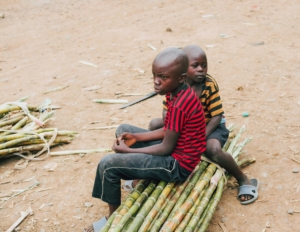Connecting the Congo


The Democratic Republic of Congo (DRC) is in a position to connect 9.7 million more unique mobile Internet users by 2029 under the right policies. Home to roughly 110 million people, the DRC’s growing youth population makes reliable Internet access an essential resource.
Expanding connectivity is also key to boosting economic opportunities as the country faces persistent financial struggles. Despite the issues of affordability, limited rural access and the self-stifling of the mobile sector, there are many avenues that these policies are looking to open up.
Current Issues
As of 2022, only about 27% of the population had access to the Internet, just over one-quarter of the country’s total population. This figure is well below Africa’s continental average of 39%, making it harder for the DRC to stay connected globally.
The average income required to afford the Internet has decreased recently, dropping from 48.98% in 2018 to 16.36% in 2024. However, despite this significant drop, affordability remains a major barrier. In the case of a cybersecurity incident, the DRC scores just five out of 100 in its ability to minimize potential problems.
Economically, an Internet shutdown is estimated to cost the DRC $261,762, with two shutdowns recorded in the past year. Overall, connecting the Congo has not been an easy task, with its Internet Resilience Score standing at only 23 out of 100.
Looking Forward
Connecting the Congo has a path forward despite the issues faced. The addition of Internet exchange points over the past 10 years has made using the Internet easier. With the Internet Society’s help, the Internet price has dropped by 98%, saving money for Internet providers and customers, allowing even more people to utilize the Internet.
There is still progress to be made to ensure consistent connectivity, especially as the DRC is the fourth-largest country in Africa. However, these steps are essential to keep the country moving forward.
Policies are also in place to support growth, including modernizing frameworks to lower costs, strengthening infrastructure and equipping DRC citizens with essential digital skills. These policies also aim to extend Internet access to public services, making them more efficient. Through these initiatives, the DRC is positioning itself to make significant strides in connecting the country to the rest of the world.
Conclusion
The DRC still has many strides to make in truly getting all of its people connected to the Internet. Issues like availability, affordability and weaker-than-average connectivity remain at the forefront. However, progress is being made.
The rollout of IXPs and the planned policies for the future of the Internet are expected to make big waves in connecting the Congo, allowing everyone to contribute to a world that is more interconnected and inclusive.
– Amari Jennings
Amari is based in Orlando, FL, USA and focuses on Good News and Technology for The Borgen Project.
Photo: Unsplash
